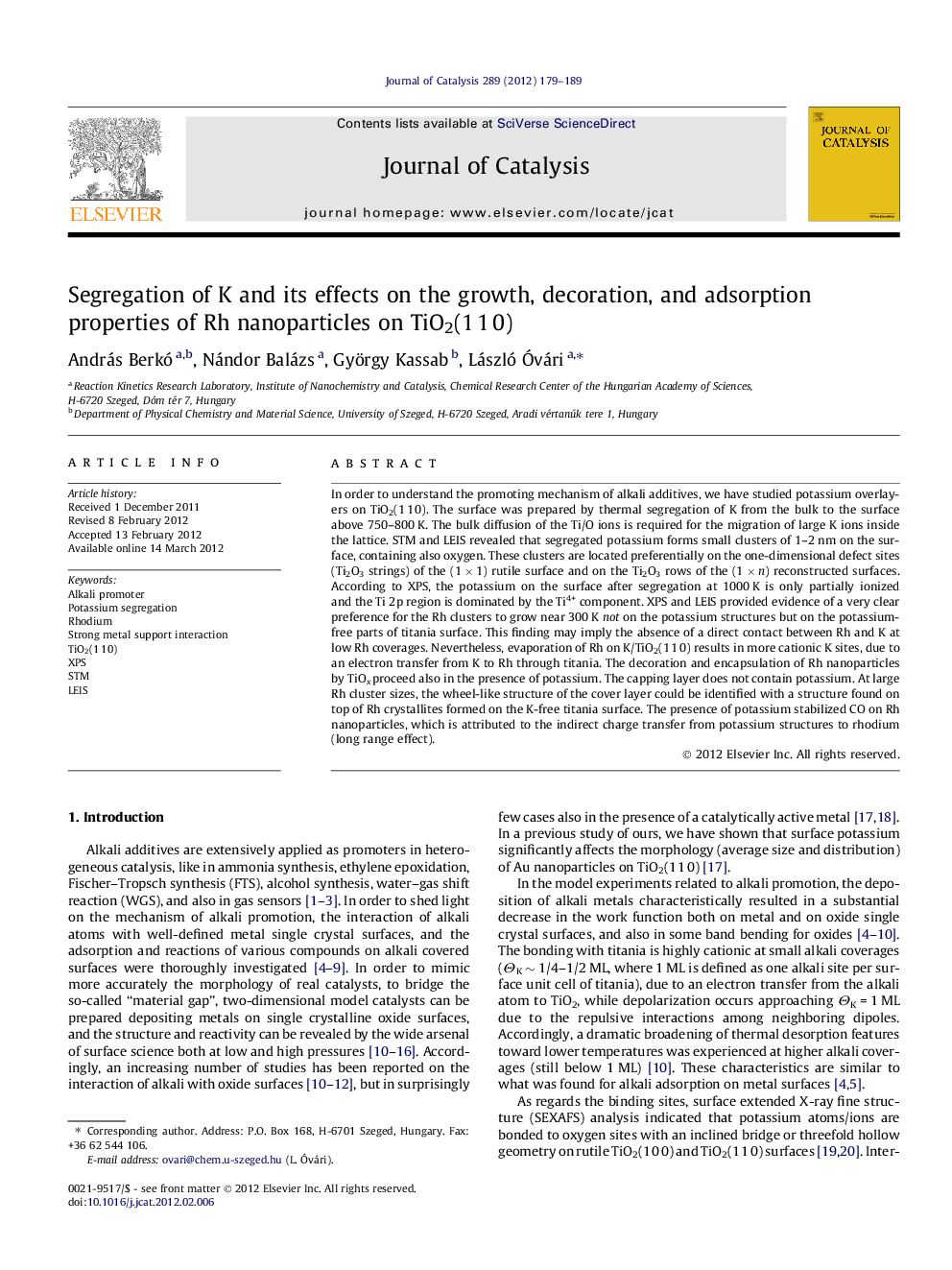| Article ID | Journal | Published Year | Pages | File Type |
|---|---|---|---|---|
| 61453 | Journal of Catalysis | 2012 | 11 Pages |
In order to understand the promoting mechanism of alkali additives, we have studied potassium overlayers on TiO2(1 1 0). The surface was prepared by thermal segregation of K from the bulk to the surface above 750–800 K. The bulk diffusion of the Ti/O ions is required for the migration of large K ions inside the lattice. STM and LEIS revealed that segregated potassium forms small clusters of 1–2 nm on the surface, containing also oxygen. These clusters are located preferentially on the one-dimensional defect sites (Ti2O3 strings) of the (1 × 1) rutile surface and on the Ti2O3 rows of the (1 × n) reconstructed surfaces. According to XPS, the potassium on the surface after segregation at 1000 K is only partially ionized and the Ti 2p region is dominated by the Ti4+ component. XPS and LEIS provided evidence of a very clear preference for the Rh clusters to grow near 300 K not on the potassium structures but on the potassium-free parts of titania surface. This finding may imply the absence of a direct contact between Rh and K at low Rh coverages. Nevertheless, evaporation of Rh on K/TiO2(1 1 0) results in more cationic K sites, due to an electron transfer from K to Rh through titania. The decoration and encapsulation of Rh nanoparticles by TiOx proceed also in the presence of potassium. The capping layer does not contain potassium. At large Rh cluster sizes, the wheel-like structure of the cover layer could be identified with a structure found on top of Rh crystallites formed on the K-free titania surface. The presence of potassium stabilized CO on Rh nanoparticles, which is attributed to the indirect charge transfer from potassium structures to rhodium (long range effect).
Graphical abstractFigure optionsDownload full-size imageDownload high-quality image (129 K)Download as PowerPoint slideHighlights► Partially oxidized K clusters (1–2 nm) were formed on TiO2(1 1 0) by segregation. ► Rh nucleated and grown with strong preference on K-free TiO2 regions. ► Nevertheless, electrons are transferred from K to Rh, probably through TiO2. ► This indirect electron transfer leads to a stabilization of CO bound to Rh. ► A TiOx decoration layer, containing no K, is formed on Rh clusters upon annealing.
